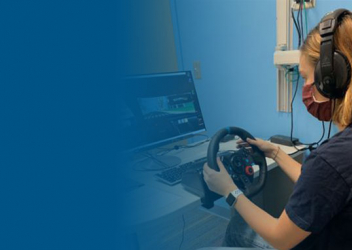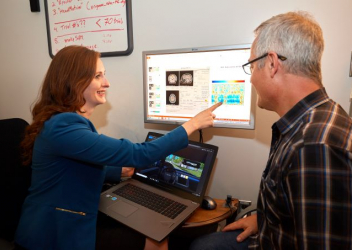Research In Action
Research In Action
Breadcrumb

During my 6-month co-op internship as a Research Assistant on the Neuroscience of Driving team at the Center for Injury Research and Prevention at Children’s Hospital of Philadelphia, I worked alongside Dr. Elizabeth Walshe, Dr. Flaura Winston, Jamillah Millner, MPH, and others to assist with a novel strategy to recruit participants in a pilot study examining the role of driver training in reducing crash risk in novice adolescent drivers.
Our strategy to enroll participants into our study was to collaborate with one of CHOP’s primary care locations to conduct recruitment on-site. Patients who were already scheduled to see their pediatricians were approached about participating in the pilot study. By recruiting at the primary care facility directly, we were able to show patients and their parents the importance of injury research and prevention as an important part of adolescent care. By bringing relevant research into the pediatric clinical setting, we were able to meet families already seeking out healthcare to provide them with anticipatory guidance around young driver safety.
Reaching Patients and Their Families
During recruitment, our team contacted patients a week in advance of their primary care appointment to gauge their interest in participation. For those who were interested, we tried to obtain consent from as many participants as possible over the phone to reduce the amount of time they needed to stay after the appointment. For patients with whom we did not make contact before their appointment, we posted flyers at the primary care practice detailing our study purpose and procedures. Before or after their appointments, we would ask if they wanted to stay on to participate in our study. Our biggest challenge was the time involved (30 minutes to consent and 30 minutes to perform study procedures), with some families not being able to stay that long after their appointment.
Our team previously used a similar strategy of bringing relevant research into the clinical setting with another study procedure that is currently implemented in primary care practices throughout the CHOP Care network. The Virtual Driving Assessment (VDA) can help adolescents assess their driving strengths and weaknesses through a computer-based simulation before they hit the road. The personalized feedback report of their driving performance can help guide the development of crucial driving skills through parent-supervised practice. Our team’s positive experience with this process helped to inform our recruitment strategy and helped us to get buy-in from the practice for the pilot study.
My future goal is to become a pediatrician and work in a primary care office like the one where we recruited participants for the study. My experience with the Neuroscience of Driving team taught me the importance of bringing injury research and prevention to the primary care setting. As I reflect on my experience working at CIRP, I am very grateful to have been able to learn from the experienced researchers and staff on the team and to see first-hand that research is not only about making changes in the future, but also about bringing awareness to current public health issues.





